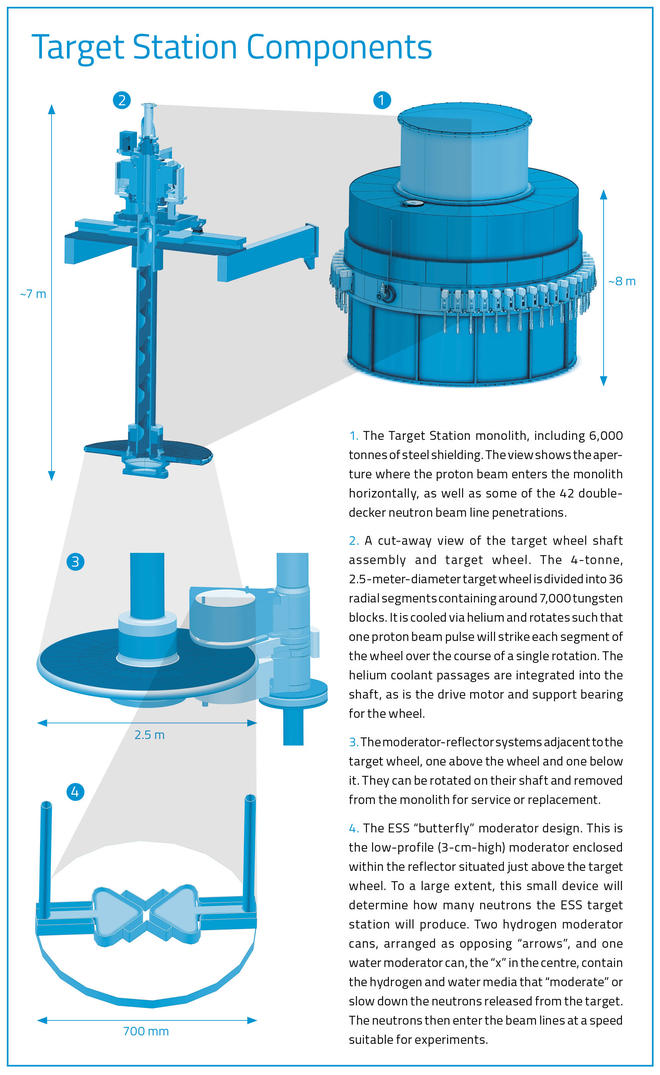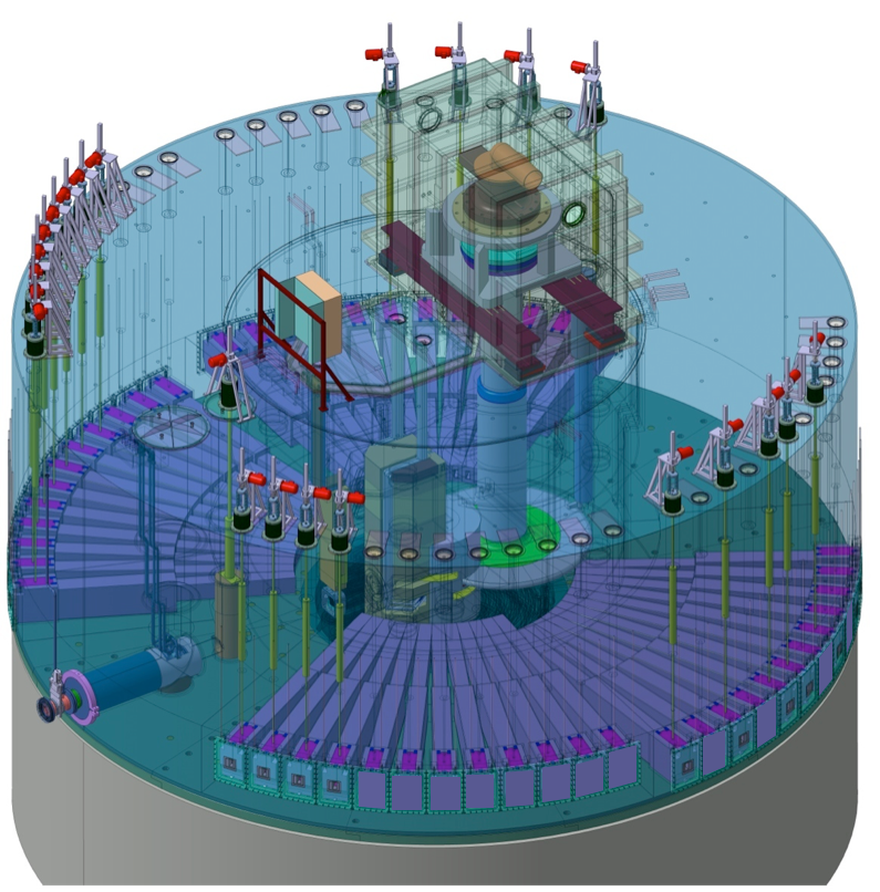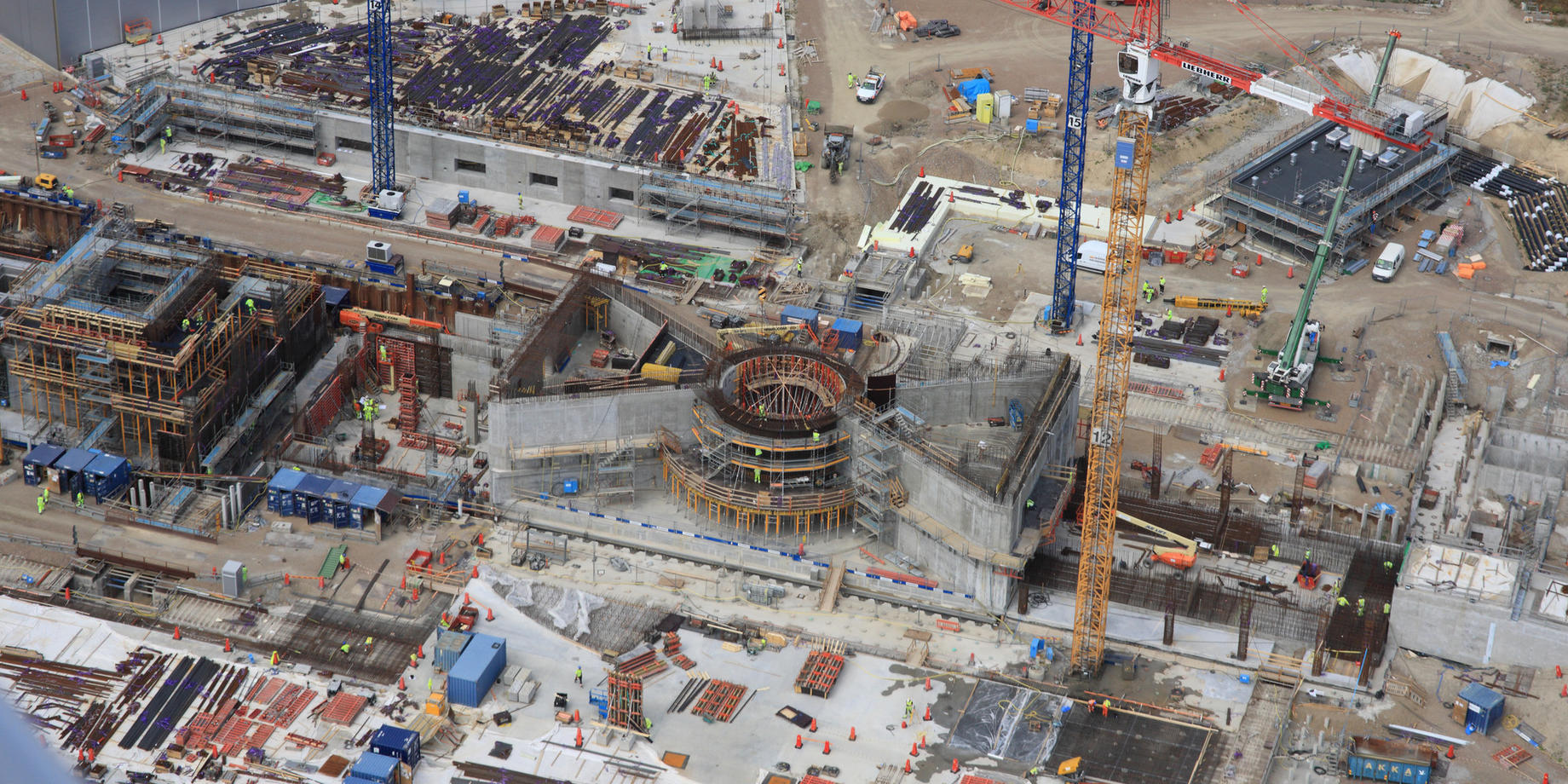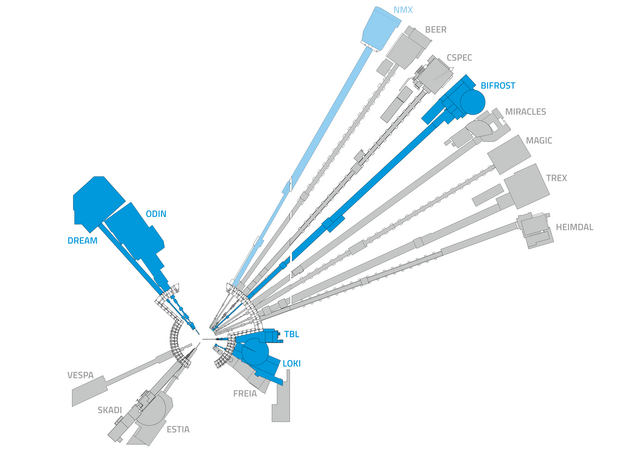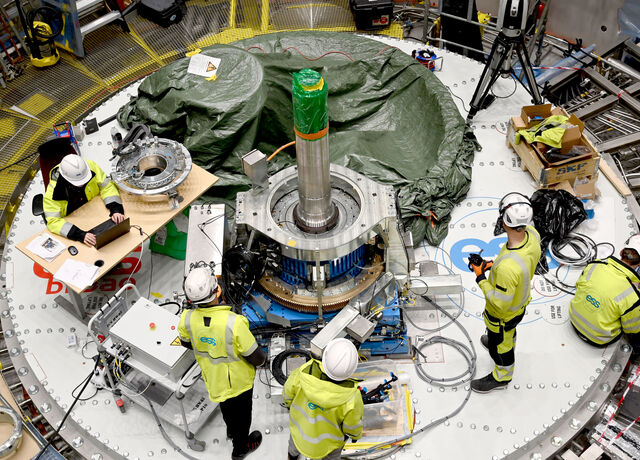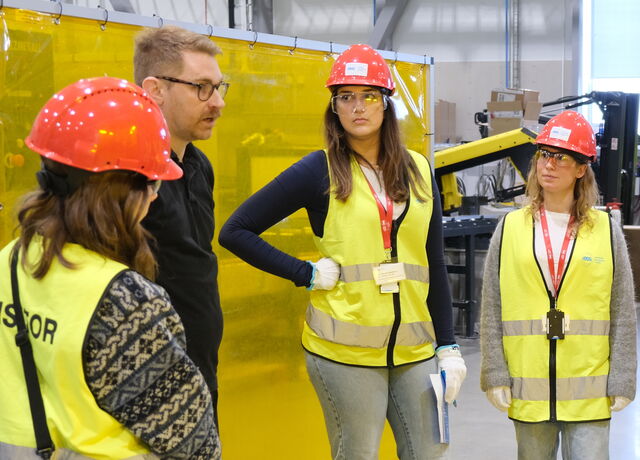How the Target works
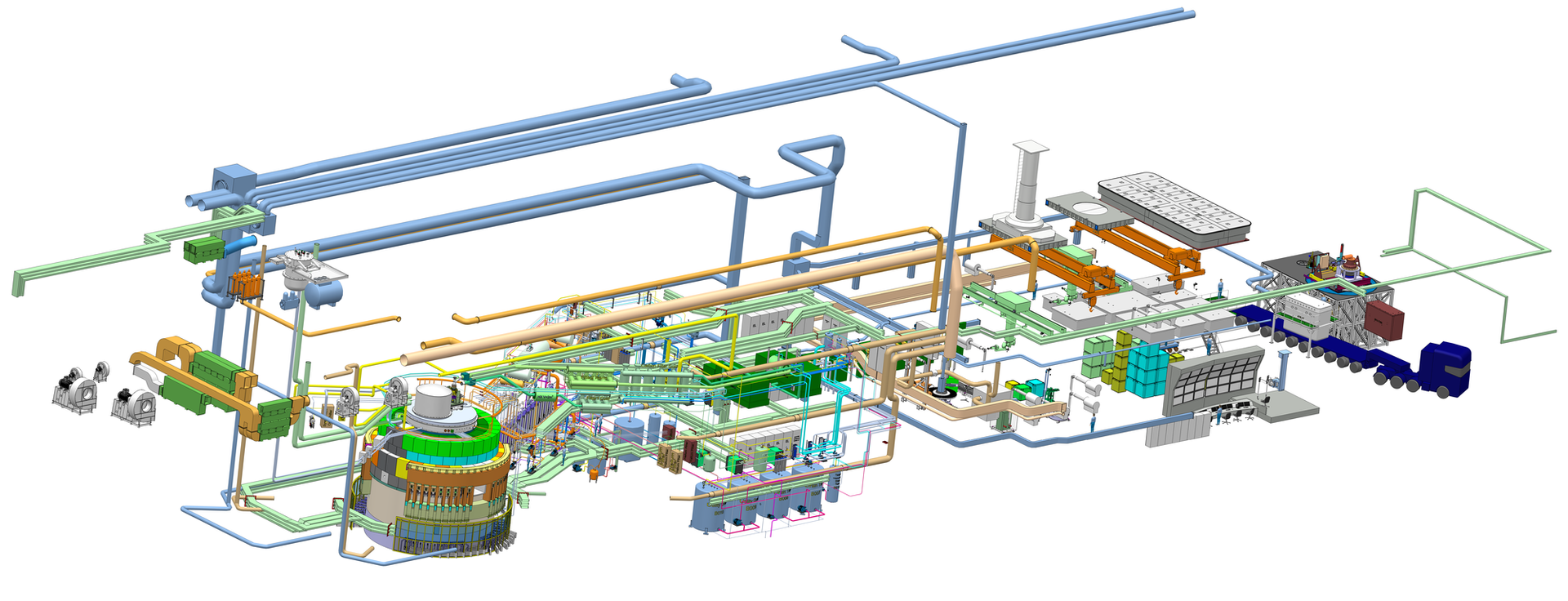
-
The target is a 2.6 m diameter stainless steel disk containing bricks of a neutron-rich heavy metal: tungsten. It weighs almost five tonnes.
The wheel rotates at 23.3 RPMs, in time with the arrival of the proton beam painted across the exterior of the wheel shroud. The unit is cooled by a flowing helium gas system interfaced with a secondary water system. The tungsten wheel is a new technology for spallation sources, none of the established target designs being adequate for the higher power level of ESS. -
Spallation is the process of producing neutrons by means of a particle accelerator and a heavy metal target.
The collision of protons and the nuclei of the tungsten target throws off, or scatters, a collection of high-energy neutrons. The more neutrons produced in the target collision, the “brighter” the neutron source. The European Spallation Source will be up to 100 times brighter than existing spallation sources. -
The Target Station must also incorporate a powerful helium-based cooling system able to dissipate the heat generated by the world's most energetic proton beam hitting the target.
The Target Moderator Cryoplant provides cold helium to the target's supercritical hydrogen moderator. The Target Station itself is cooled by ambient temperature helium. -
The neutrons, which, following spallation, travel at 10% of the speed of light, are then slowed down to roughly the speed of sound, an energy level usable by the scientific instruments.
This is achieved using a para-hydrogen and water-based moderator and a beryllium-lined reflector. The moderator-reflector system is housed in a replaceable plug, and also includes cryogenic hydrogen and water-cooling systems. ESS will initially install one low-dimensional liquid-hydrogen moderator, partially surrounded by water pre-moderators of a comparable volume. -
Once moderated, the neutrons are delivered to the instruments through 42 beam ports radiating from the Target Station.
The beam extraction system provides intense slow neutron beams through beam tubes going across the target shielding. The neutrons are delivered at the surface of the shielding, to be used at the neutron scattering instruments. The proton beam window separates the high vacuum in the accelerator from the inert helium gas. -
The target will be surrounded by steel shielding in the form of the cylindrical, 6,000-tonne Target Station Monolith to prevent unwanted ionising radiation from escaping.
-
The Target Station also has an Active Cells Facility (ACF) to perform remote handling, disassembly, and storage of components that are taken out of the monolith after reaching the end of their lifetime.
Additionally, a dedicated HVAC system operates within the Target Building, servicing all Target Station areas including the ACF.
How the Accelerator works
A basic introduction to the ESS Accelerator.
























